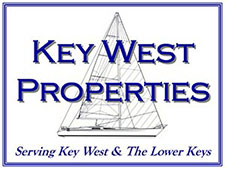In short, no. Why?
Before the great real estate crash of 2008-2010, foreclosed properties, especially here in the Keys, were very uncommon, if not just flat out nonexistent. And, in the very rare event that a lender was forced to foreclose on a property, they dumped it immediately and often at a deeply discounted price.
Banks and institutional lenders have been barred from entering the real estate business because it would create an anti-competitive environment. Lenders, having access to federally subsidized low-cost funds via the FDIC could compete unfairly with real estate companies and their by cross-subsidizing banking and financial operations.
So, prior the real estate crisis hit the national economy in 2008-2010, banks/lenders knew how to lend money, but they knew little about what to do with the massive portfolios of foreclosed properties that they were about to acquire. However, they learned quickly how to dispose of these unwanted assets and learned how to do it efficiently without leaving money on the table.
Here in the Key West Real estate market (Key West, Stock Island and Key Haven), we had 95 “bank owned” (i.e. foreclosures) sales at the peak of the foreclosure market in 2009. That number has declined year by year; last year (2017) we had only 22. So far, year-to-date at the time of this article (mid April), we have had only three.
So, what does a bank do after acquiring a home via the foreclosure process? The very first thing they do is to assign it to their Asset Manager (AM); a new position banks and lenders were forced to create during the real estate melt down to handle the massive influx of foreclosed properties into their asset portfolio. The Asset Manager, after making sure they have clean title to the foreclosed property, orders an “as is” appraisal.
An “as is” appraisal takes into consideration not only the neighborhood, average sale price, etc. but also the condition of the home at the time of the foreclosure. What happens when a bank/lender takes possession of a foreclosed property is that most often the home has a fair amount of deferred maintenance or needed repairs.
So, you may ask yourself, why does a foreclosed home often need repairs or why does it have deferred maintenance? When someone falls into a hardship position, more often than not, it didn’t happen overnight. And, the foreclosure process takes months, sometimes years for the lender to complete and take possession of the home. So, when someone knows they are going to lose their home, they begin to mentally detach themselves from the home, caring less and less for it, not wanting to put any additional time, money or sweat equity into something that was once very near and dear to their heart but something that they know they will soon lose. So, after years of neglected maintenance, the bank/lender ends up with an asset that is often run down, needing paint and landscaping, a new air conditioner or maybe even a new roof. And, often the appliances have been sold before the foreclosure process is final. So, the appraiser needs to take into account how much it is going to cost for the new owner to get the property back into decent shape and subtract that amount from what the market value would have been.
Then, once the Asset Manager receives the “as is” appraisal, they will list the property for sale with a real estate brokerage or auction firm at what appears to be a very attractive price, normally just above the appraised value. However, when you take into account the total of what the needed repairs will cost and add that amount to the sale price, you most often end up investing the same amount that you could have purchased a property for that was in good condition with no deferred maintenance.
